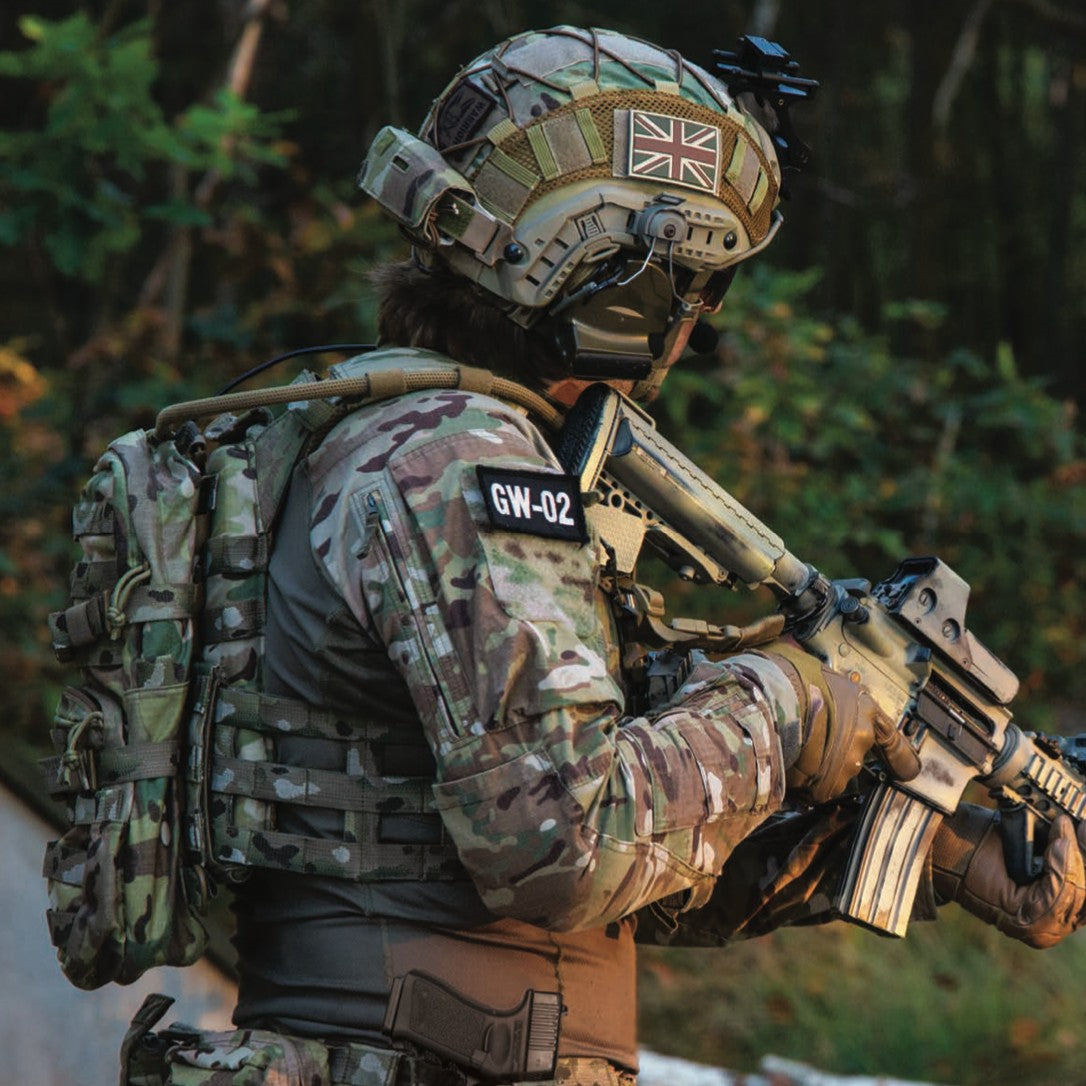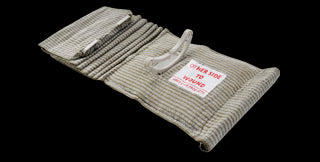


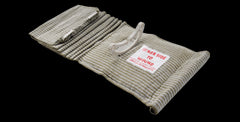
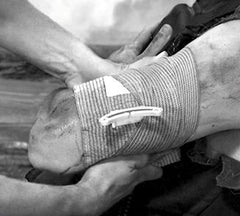

Descrizione
xThe Emergency Bandage consolidates numerous treatment equipment into a single unit and provide in one device:
-
Non-adherent pad . Eliminating the risk of causing pain and having the wound re-opened upon removal of the bandage.
-
Pressure Applicator . Creating the immediate direct pressure to the wound site.
-
Secondary Sterile Dressing . Keeping the wound area clean and maintaining the pad and pressure on the wound firmly in place, including immobilization of the injured limb or body part.
-
Closure Bar . Enabling closure and fixation of the Emergency Bandage at any point, on all parts of the body: no pins and clips, no tape, no Velcro, no knots.
-
Quick and easy application and Self-application . Designed with the end-user in mind; for the first-aid trained and the lay care-giver.
-
Significant for treatment time and cost savings
Ease of Operation
The Emergency Bandage has efficient blood staunching capability and offers ease of operation:
-
The sterile, non-adherent pad is placed on the wound.
-
The application of immediate direct pressure to the wound site is achieved by wrapping the elasticized woven leader over the topside of the bandage pad where the specially designed pressure bar is situated. The pressure bar is designed to readily accept and hold the wrapping leader.
-
After engagement of the pressure bar, wrap the leader in any direction around the limb or body part and onto the pressure bar forces the pressure bar down onto the pad creating the direct pressure needed to bring about homeostasis.
-
In addition to its primary function, the pressure bar also facilitates bandaging. The elastic bandage uses the rigid shape of the pressure bar to change direction while bandaging, thus affording the caregiver more options for effective dressing of the wound.
-
Subsequent wrappings of the leader secures and maintains the pad in place over the wound, and by covering all the edges of the pad acts as a sterile secondary dressing. The bandage leader is woven to remain at its full width and will not bunch up or twist itself into a rope.
-
The closure system of the bandage is multi-functional yet simple, quick, and familiar. Located at the end of the leader is a closure bar (dowel with hooking clips) at each end to secure the wrapping leader the same way that a pen is secured in a shirt pocket. The closure bar holds the bandage securely in place over the wound site.
-
If additional pressure is required the closure bar is easily removed from its first closure position and inserted between previous layers of the leader directly above the protruding pressure bar and rotated. This rotation of the closure bar acts to further press down the pressure bar onto the wound to exert blood-staunching pressure. The closure bar is used as before to secure the dressing.
Competitive Advantages
-
The Emergency Bandage is for the untrained lay person as well as the paramedical professional. The bandage features ergonomic designs for quick and easy application to free the caregiver from searching for additional equipment. Focus and control in treatment are enhanced.
-
The sooner the treatment begins the better the victim's chances of survival, particularly in cases of hemorrhaging.
-
The Emergency Bandage saves time in an emergency situation where every second is crucial. The Emergency Bandage consolidates the functions of numerous separate pieces of equipment into a single easy-to-use unit. Application is simple and quick. As one unit the bandage performs multiple functions, and therefore enhances the treatment provided.
-
The Emergency Bandage provides injury victims acting alone the ability to accomplish the entire bandaging operation independently, including, in certain cases, tourniquet application, even if using only one hand.
-
Consolidation of functions makes treatment more efficient, both medically and economically. Compared to current treatments the Emergency Bandage proves to be an improved life-sustaining device at a competitive price.
-
Immediate and effective direct pressure to the wound may reduce the need for a tourniquet application. This is an important benefit as tourniquet applications are to be avoided and used only as a last resort. In certain cases, if a tourniquet is required the closure bar is removed from above the pressure bar and inserted between previous revolutions of the wrapping leader 5cm above the wound, over the blood vessel, and rotated. This rotation twists the wrapping leader until the blood flow to the wound site is constricted. After a tourniquet has been achieved, the closure bar is used as before to secure and maintain the tourniquet as well as the secondary sterile wound covering which is still in place.
- Choosing a selection results in a full page refresh.

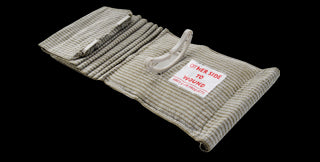

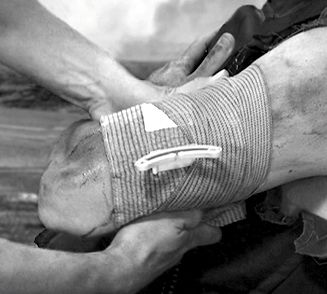
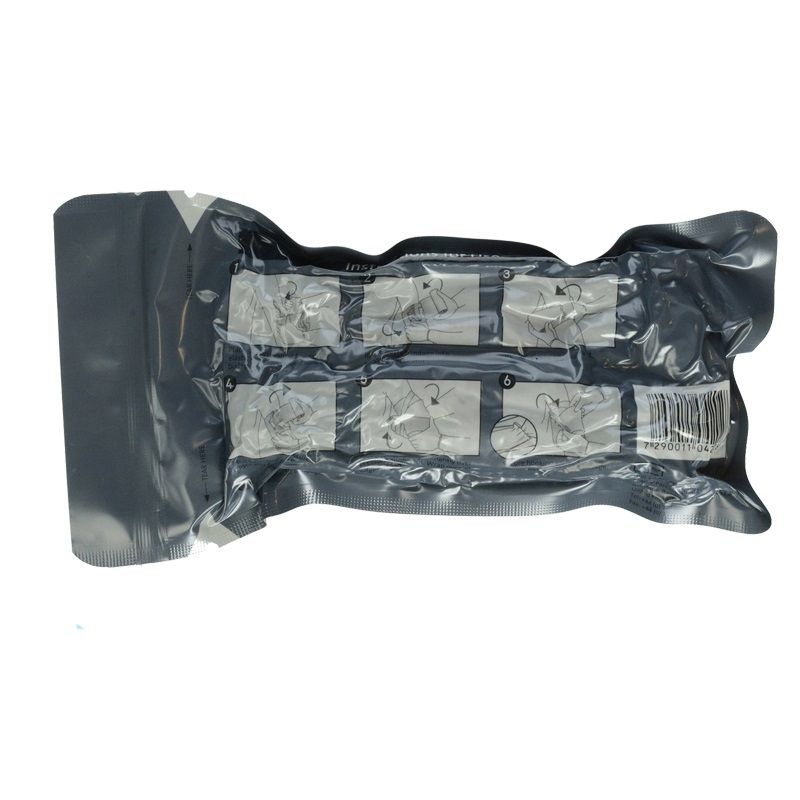

 NCAGE: AX496
NCAGE: AX496